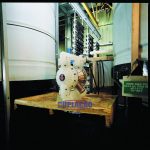As bombas pneumáticas de diafragma são equipamentos amplamente utilizados em ambientes industriais, principalmente devido à sua capacidade de transportar e bombear uma variedade de fluidos. A selection and configuration corretas desse equipamento são fundamentais para garantir sua eficiência e aumentar sua vida útil.
Leia também: Guia Prático para Seleção e Configuração de Bombas de Diafragma – Parte 1
Pneumatic diaphragm pumps work through a very simple but very efficient mechanism. To create a compression and decompression cycle, a flexible diaphragm in the pump body moves, allowing the fluid to move. This mechanism can be activated in different ways, such as:
- Pneumatic drive: In this case, the pump uses compressed air to move the diaphragm, making it ideal for environments where it is not possible or dangerous to use electrical energy.
- Hydraulic drive: Here, the diaphragm is activated with the help of a hydraulic fluid, offering power and being ideal for industries that require higher pressures.
- Electric drive: In this case, the electric motor is responsible for moving the diaphragm, offering precise control and being ideal for operations that require less maintenance and more precision.
How to choose the ideal pneumatic diaphragm pump
There are some factors that must be considered when choosing a pneumatic diaphragm pump. See the main ones below:
Essential factors to consider when choosing a pneumatic diaphragm pump
In terms of the type of fluid, it is necessary to evaluate some factors, such as viscosity. To pump viscous fluids, it is necessary to have a more robust pneumatic diaphragm pump.
When it comes to corrosive and abrasive fluids, it is essential to choose more resistant construction materials, such as stainless steel, Teflon or high-performance polymers. In this case, it is necessary to check the pump compatibility table to ensure safe pumping of the fluid in your operation.
Flow and pressure
The required flow rate, in liters per minute, must be determined before choose your pump. The equipment must be able to maintain the desired flow rate without compromising the efficiency and safety of the operation.
In this sense, the maximum operating pressure must be compatible with the maximum pressure that the pump can withstand. For this reason, check the maximum discharge pressure and suction pressure to ensure the pump is not overloaded and can operate safely and efficiently.
Type of trigger
The way the pump will be activated also makes a difference in the selection process. Pneumatic drive, for example, offers high versatility and adjustable control, making it suitable for environments where electricity is not a possibility.
The electric drive guarantees more precision in control and is ideal for operations that need to act continuously and efficiently, guaranteeing results and bringing productivity to your industry.
The hydraulic drive, in turn, is ideal for applications that require high pressure and power.
How to configure your pneumatic diaphragm pump
The first step to configuring your pneumatic diaphragm pump is installation and correct positioning. The pump must be installed on a stable and level surface to avoid displacement due to vibrations.
It is also necessary to ensure that the input and output connections are correctly aligned to avoid stress on the connections and possible leaks. The inlet and outlet piping must be compatible with the fluid that will be pumped and the operating pressure.
Pressure adjustment must be made in accordance with the manufacturer's specifications and application requirements. For this, you can use pressure gauges and adjustment valves that help you adjust the pressure and monitor it continuously.
External diaphragm plate printing
Performing regular inspections of the diaphragm, gaskets and valves can help detect signs of wear or damage to the equipment. It is also necessary to check the condition of the pipes and connections to avoid leaks and operational problems.
In addition to these inspections, it is necessary to maintain a frequent cleaning process of the pump and its components to avoid the accumulation of particles and residues that compromise performance. For this process, follow the equipment manufacturer's recommendations.
If worn or damaged parts are identified, replace them appropriately. Always use the replacement parts recommended by the manufacturer to maintain the performance and quality of the pump.
Security
To ensure that the pump delivers availability and a longer service life, it is necessary to protect it against overload. To do this, it is possible to use protection devices, such as relief valves and pressure sensors.
It is also extremely important to train the operators responsible for the equipment, including operational and safety procedures. To contribute to and facilitate emergency actions, maintain detailed documentation about the operation, failure history and maintenance performed, helping to resolve problems and implement continuous improvements.
Selecting and installing a pneumatic diaphragm pump requires personnel to understand the application needs and equipment characteristics. Considering the type of fluid, flow, pressure, type of drive and maintenance practices, it is possible to ensure that the pump has superior performance.










